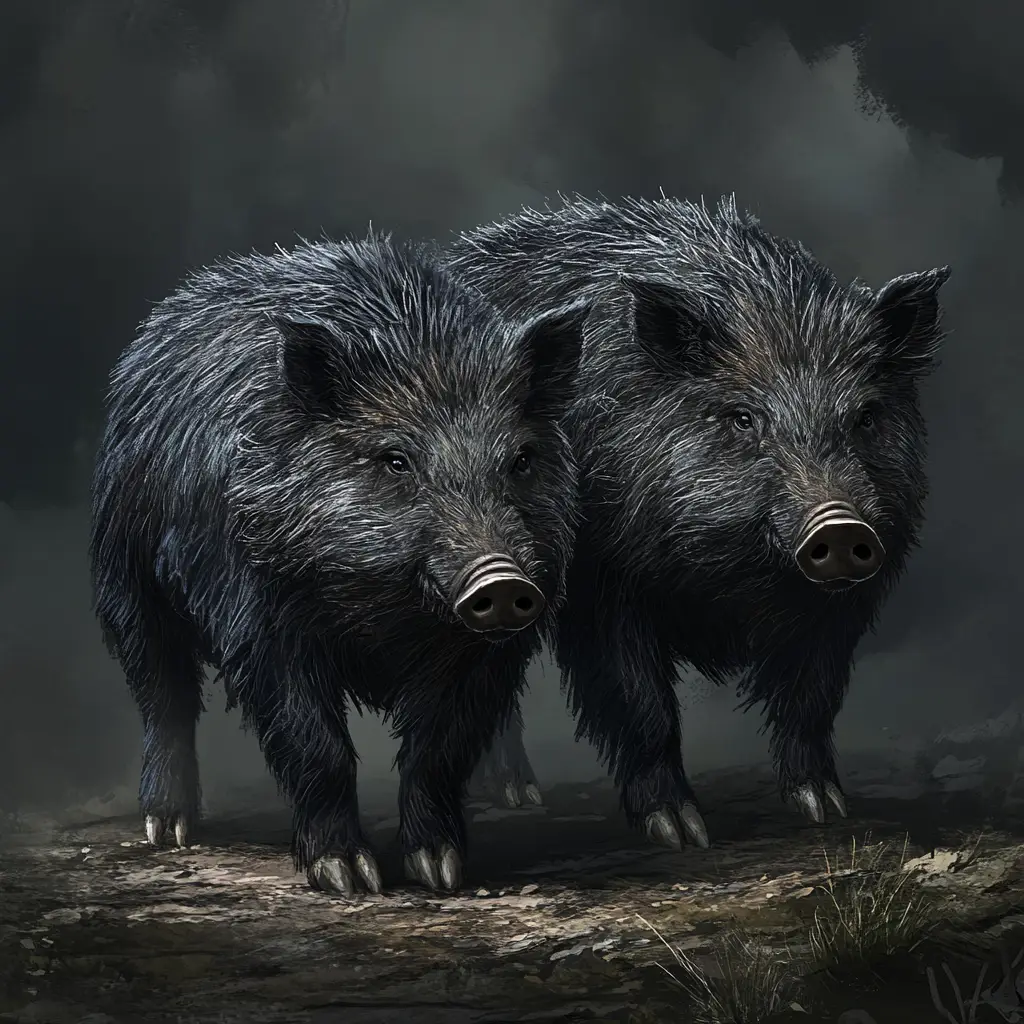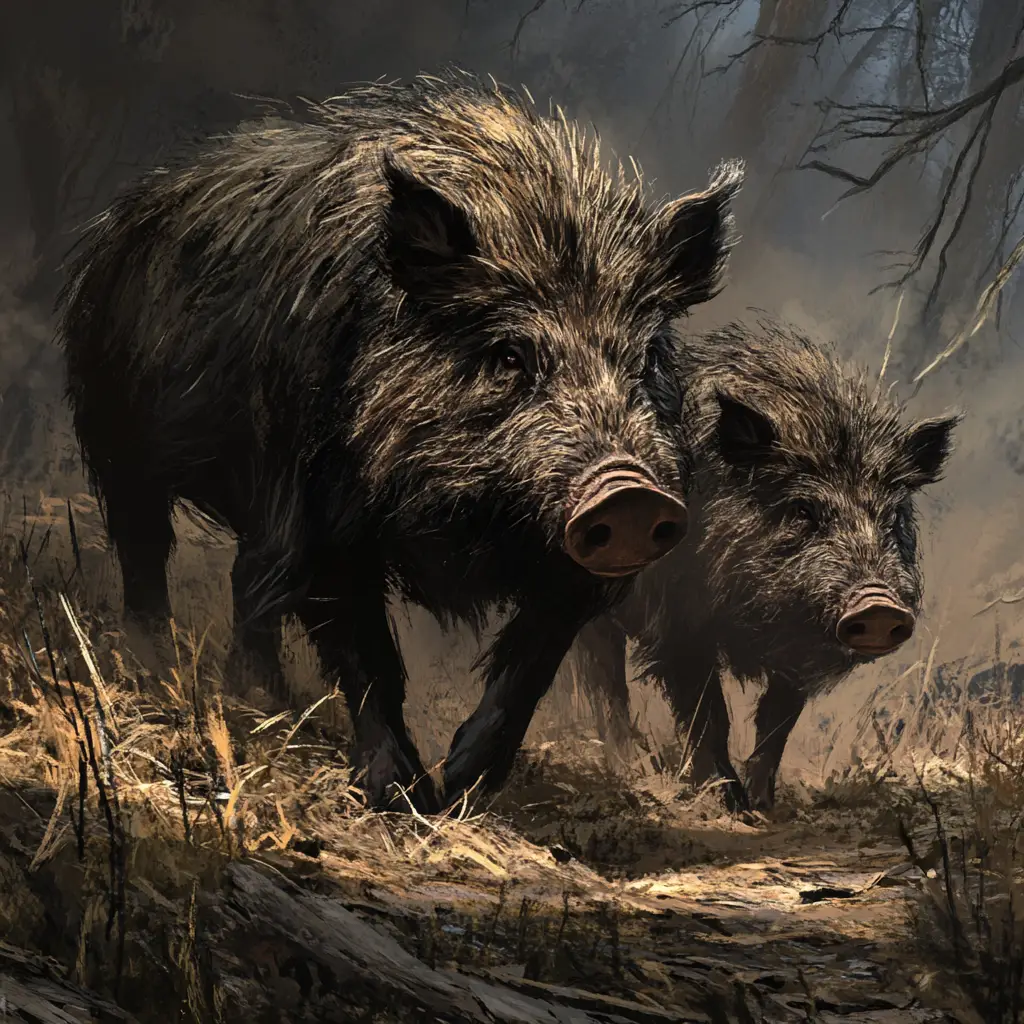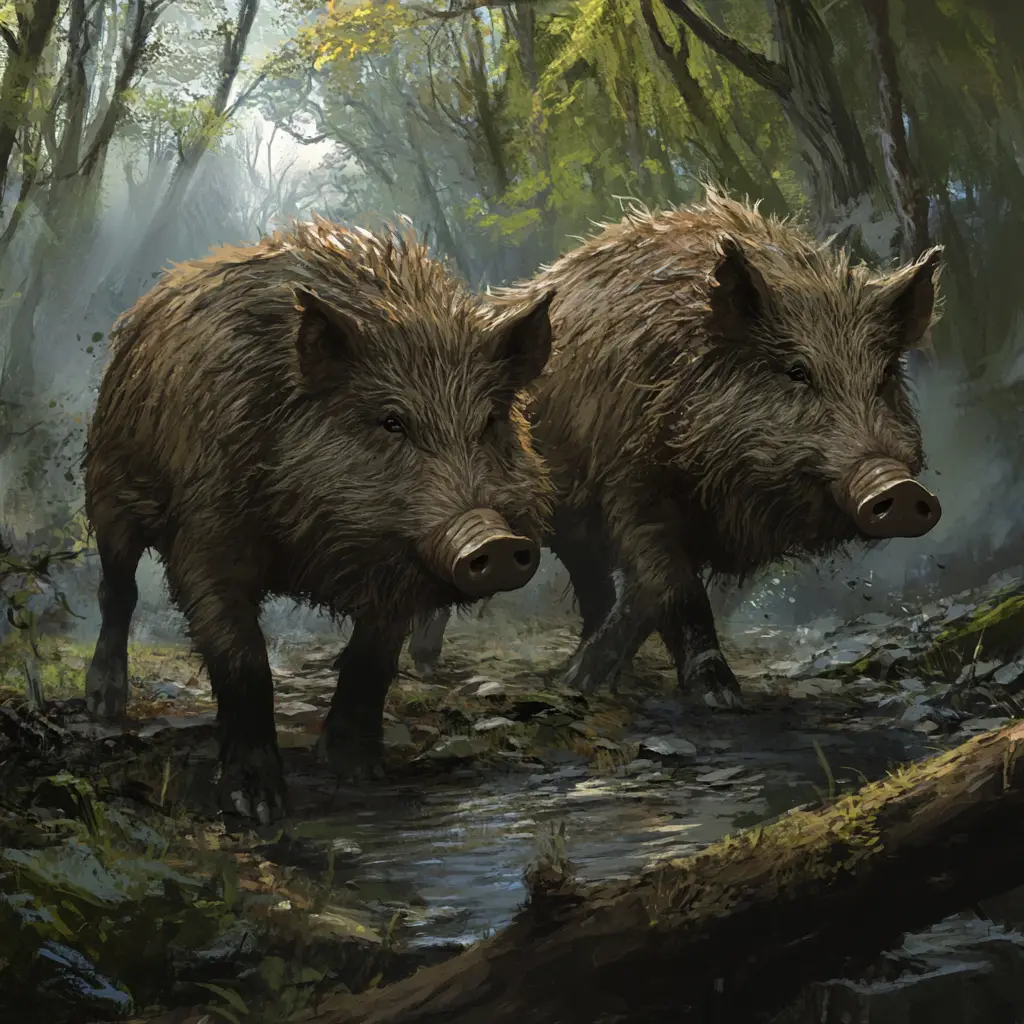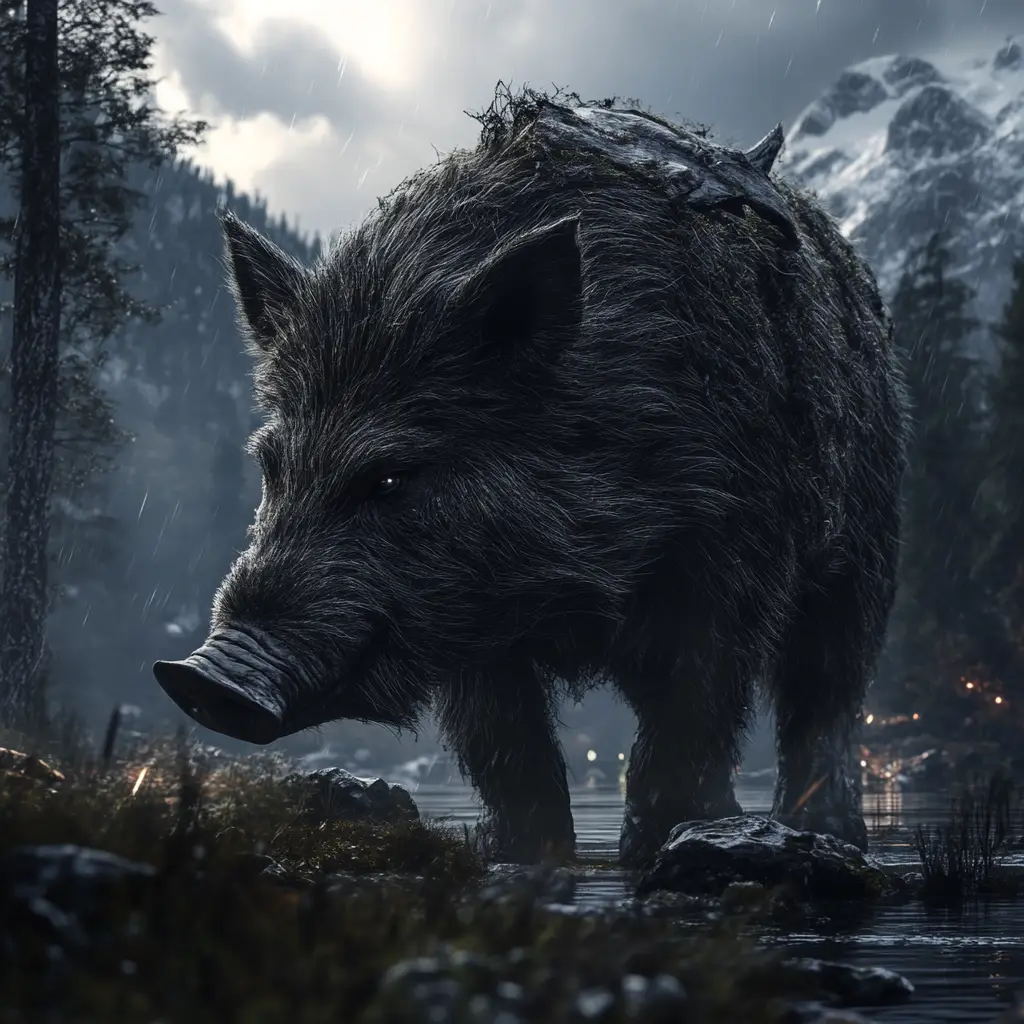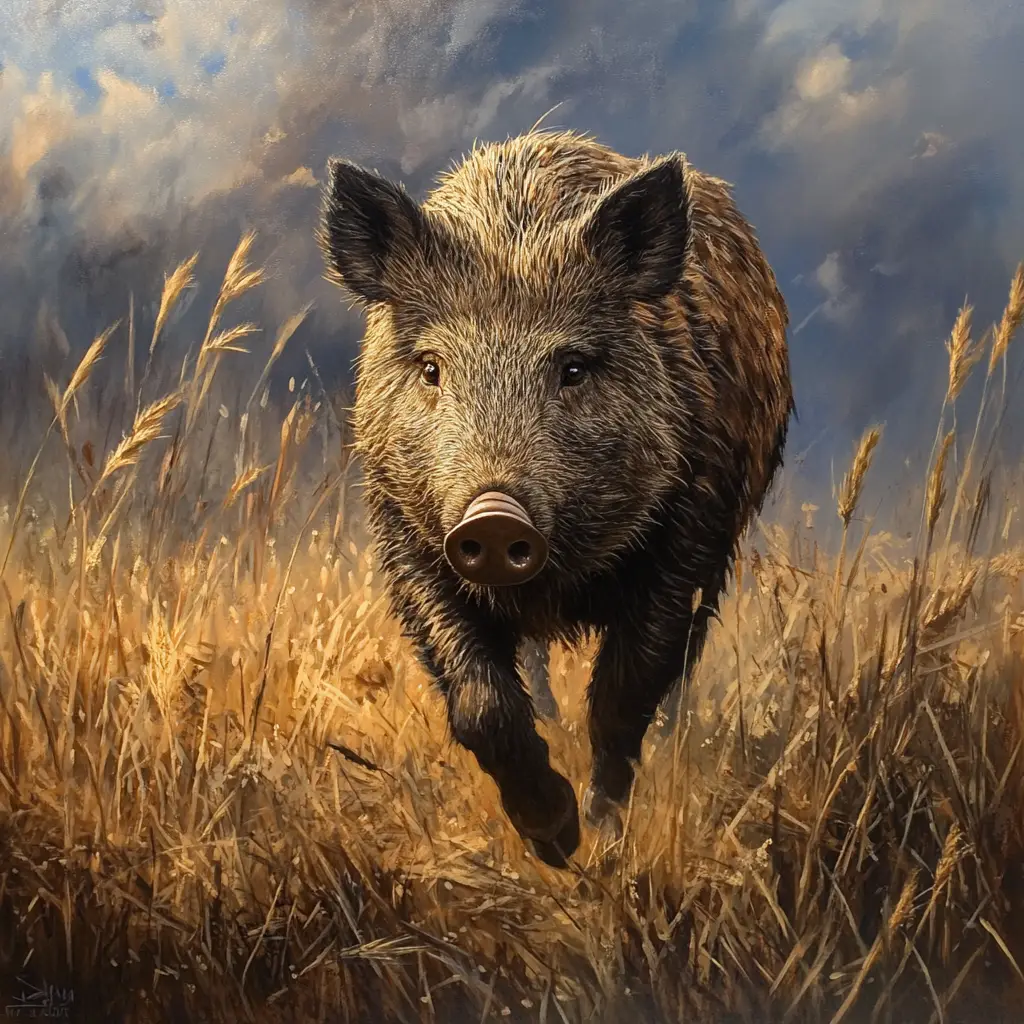Boars held significant cultural and symbolic meaning in Norse society, representing strength, fertility, and protection. They were often associated with the gods and featured prominently in mythology, rituals, and even in daily life.
Key Roles of Boars in Norse Culture:
Symbol of Fertility
Boars were linked to fertility and abundance, largely due to their connection with Freyr, the god of fertility and prosperity. Freyr’s magical boar Gullinbursti embodied these traits, with his golden bristles symbolizing the life-giving power of the sun and the earth’s fertility.
Boar sacrifices were common during Yule (the Norse midwinter festival), where offerings were made to Freyr to ensure a good harvest in the coming year. The Sónargöltr (sacrificial boar) was a key part of these rituals.
Protection and War
Boars were also symbols of strength, courage, and protection in battle. Hildisvíni, a boar ridden by the goddess Freyja, represented this fierce warrior aspect. Freyja, as both a goddess of fertility and war, embodied the dual nature of the boar.
Viking warriors often wore helmets adorned with boar imagery, believed to offer protection in battle. The boar’s fierce, aggressive nature made it an apt symbol for warriors seeking strength and resilience.
Boars in Mythology
Beyond Gullinbursti and Hildisvíni, boars frequently appeared in legends and sagas as symbols of bravery and honour. They were revered as animals that embodied both the nurturing aspects of fertility and the raw power required for survival and defence.
Boars in Art and Iconography
Boar motifs were commonly found in Viking art, particularly on shields, helmets, and other warrior gear. These designs not only reflected the boar’s protective qualities but also its cultural significance in invoking strength and fearlessness.
